Last week Airdog announced their latest sports-tracking drone, the Airdog ADII. Years ago the company announced on Kickstarter their first drone, simply called Airdog, which was aimed 100% at the sports tracking market. It didn’t pretend to be a more general drone, but rather was all about capturing yourself doing cool stuff in sports. I reviewed it here.
With the ADII, their goal was to essentially take that existing unit, add some features and blend it a bit with the more general drone realm. Meaning that it’s still 100% a sports-action drone, but they’ve added other functions to allow you to get more general/establishing/scenic shots that aren’t necessarily focused on you. This is critical for putting together a good video edit that doesn’t quickly get boring.
Over the past weekend I got to test out a near-production unit out in the French Alps, putting it through its paces. This isn’t a review, since the unit won’t start shipping until August or so (which is basically this afternoon by Kickstarter standards), but an initial look at the technology. I’ll circle back in August or September with a deeper dive into the product as part of a review…once they start shipping.
If you just want a simple video (including footage), that explains it all – here ya go:

With that, onwards into more textual tech details!
What’s New – Software:
I’m going to largely skip over the Airdog basics in this post. Mostly because I’ve covered them at length in the In-Depth review of the first generation unit. In 7 bullet points, here’s what you need to know about Airdog basics:
– Airdog is designed specifically for the sports market to follow/film you, not so much the general drone market
– Airdog works by you wearing a small waterproof transmitter pod (about the size of a deck of cards), which the drone then follows around. The transmitter pod is called the Airleash
– Both the Airleash and Airdog have barometric altimeters and GPS on them, and communicate continuously wirelessly to know exactly where you are.
– The Airleash has some buttons on it, allowing you to change the position and altitude of the drone, as well as different follow modes
– It has a gimbal stabilized camera platform that holds a GoPro Hero5 Black (that you have to provide)
– The battery life is about 15 minutes per battery, which is a bit on the low-end these days, though easily covers most ski runs or downhill mountain bike runs
– Upon the battery finishing, you can configure the unit to land where you are, or to land back at the start (ideal for watersports, where you want to land it on the beach).
With me so far? Good.
So what’s new on the ADII? Well, let’s dive things into two categories – hardware and software. First we’ll talk software, since that’s the piece people will think is more exciting (though, the hardware is significantly changed under the hood too).
First up is the unit now has new scenic modes. One of the big complaints in the past was that you couldn’t get establishing shots or just generic scenery shots around you. Now you’ve got that with five new scenic modes:
– Reveal In
– Reveal Out
– Top-down
– 360° Panorama
– Circle Around
These modes can be triggered at any time by pressing the little star button on the Airleash. They allow you to get shots like this:
Next, the ADII supports 3D lines. Previously you could use the line function to force the Airdog to stay on a virtual cable in the air. This was great for places like tight terrain (such as with trees), wakeboarding parks (where a cable drags you around), or even just creative shooting and shifting of the camera.
But you couldn’t control the elevation, nor could you control the orientation of the camera relative to you. Also, lines were limited to two points.
Those limits are all gone now. You can create complex lines (via phone or the Airleash) which have multiple points, multiple elevation levels, and even different camera angles. The easiest way to do so is with the Airdog app.
Though, the most accurate way (for elevation data) is with the Airleash itself.
Next, we venture into the realm of sorta-hardware, sorta-software changes. First, the Airdog ADII will automatically start recording of your GoPro Hero5 for you. Previously it required you remember to press record prior to take-off. If you didn’t, there was no way to do so in the air remotely. It’ll also change the settings for you so you’re in the right mode.
At this point in the beta, that wasn’t yet implemented, so I couldn’t test that feature. It sounds like that’s coming shortly.
Also of note is in the software side of things you’ve got far more customizable control of how quickly the gimbal moves and how the unit follows. These can be customized on a per sport or custom sport basis.
The second blended change is the calibration piece, which you needed to do prior to take-off each time. That’s significantly changed now and far easier. I’ll talk about that more in the calibration section.
What’s new – Hardware:
Next, we’ve got the hardware changes. From the exterior at a few meters away, you’d notice almost no differences. The most visible of course being the new Airdog camera gimbal, which houses the Hero5 Black:
That gimbal is significantly different than the past gimbal, which wasn’t all that awesome. This new gimbal is roughly on-par with DJI’s gimbals and seems to (in my testing anyway) provide a much cleaner level of stabilization than the past unit. Note that it is not removable.
Next, if you look closely at the props and motors, they’ve now got individual icons for their specific prop. Since the props on the Airdog are both right-side-up and upside-down, there’s actually four different props. So each one has their own icon etched next to it. This makes it approximately 6,231 times easier to figure out than it was in the past:
Then, moving onto the landing gear, you’ll find it significantly stronger. This was an area that many of us complained about with the first generation unit, whereby I always had at least one extra landing gear with me when travelling. And even then I’d break it often.
While we’re on the underside, you’ll notice the downwards facing sensors are updated/different. They seem a bit more sensitive in my testing (in a good way, meaning, it more quickly sees the ground), but perhaps that’s just beta firmware.
(Old Airdog to left in yellow, new Airdog to right in purple)
And that’s where it’s probably good to move inside. The internals of the unit are significantly overhauled. In talking with Airdog, they said about the only thing that’s the same is the plastic shell. Beyond that it’s got an all new magnetometer/compass, all new GPS, all new barometric altimeter, as well as new processing chipsets. All of this with the goal of being more accurate, especially in 3D lines. That in turn allows you to get closer to things like trees and know it’ll stay put and on-line (preemptive note to always be safe here).
Next, the battery is different, though still compatible with the old batteries. The new battery shifts the LED lights to the rear, so you can actually see battery status on the battery when inserted into the drone. Previously you had to remove the battery to see the status.
Old battery to the left below, and new battery to the right.
Oh, and lastly, it’s sporting a different color scheme now:
Next, we’ve got the Airleash, you can see side by side they might look similar, but again, more adjustments the moment you turn them on.
First is that the LCD display is a crapton better. It’s now backlit as well as far brighter/sharper/more contrast. Basically, it’s readable now. It’s so bright it blows out my indoor photo (I show photos of the text in other outdoor shots):
(Old Airleash to left, new Airleash to right)
Then within the Airleash menu you’ve got access to the new options like creating a 3D line from the Airleash itself. This allows you to simply walk (sans-drone) from point to point to create a course, setting altitude and camera angles as you go.
You can also do this from the app instead, simply tapping for a point you want it to fly, and then setting the altitude and camera position too. Though, the camera position control is a bit funky as it’s a numerical scale which corresponds to positions around you. I’d think given the easy to use UI nature of a phone app, just being able to set the camera angle on a round circle representing the area around you would be ideal.
The star button on the Airleash now functions as a way to get to the scenic flight modes, allowing quick access to those at any time:
Finally, most notable is the start-up/calibration procedure is now dead-simple. Sure, not as simple as ‘just fly’ like on most DJI products, but since there’s more complexity to ensuring that the Airleash and Airdog know exactly where they are and everything matches, it’s understandable that you’ll have to take 60 seconds to complete this.
The new LCD screen walks you through a series of much easier to understand animations, that again, only take about 60 seconds to complete in total. You only need to do this once every 8 hours, though the company is hoping by the time they ship to get rid of that entirely if you haven’t travelled more than a few hundred miles.
Phew, got all that?
Good.
Now, of course there are some disappointments here. First is size. The unit isn’t any smaller. In the age of Mavic and Spark, it makes it a tougher sell – especially comparing weight. Though, as I showed in the video, it still folds up and easily fits into most backpacks. I used this GoPro Seeker knock-off bag (it’s designed for the similarly sized GoPro Karma), and it worked great and held four batteries with ease. You don’t really feel the weight riding, skiing, or even running – but by the same token I’d prefer it be lighter.
Then on the technical side the unit still lacks forward obstacle avoidance. If there was anything my heart sank about when I saw the new unit – it was this. Avoiding obstacles with the Airdog is the single biggest challenge the aircraft has. While you’re skiing, riding, or doing whatever – you’re constantly having to be aware of it running into trees, rock cliffs, or even quickly shifting terrain. It only has downwards depth sensing, and while that can occasionally save you from rising terrain, it doesn’t work against trees, cliffs, buildings, and so-on.
Finally, there’s the noise. Airdog claims it’s quieter than the original, and perhaps it is. But either way – it’s @#$@# louder than any other consumer drone in the category these days. Way louder. Perhaps I’ve just gotten used to how quiet the Mavic (and now Spark) are in comparison to drones of just a few years ago, but holy cow this is so much louder.
On the flipside, it’s also a beast. It had zero issues in some higher winds I found while out mountain biking, and that’s the same that I’ve seen with the Airdog first generation units. I made it perform in some really tough conditions – and every time it comes out just fine.
Of course, the drone industry is a really tough market. With DJI spitting out two or more new consumer drone iterations each year, any company that wants to compete has to have a very unique selling proposition – and has to be updating frequently. I think Airdog has that, and I think in this case they’ve added enough new features that new buyers could be enticed over. It’s a harder pitch for existing owners to upgrade given the price point (even at Kickstarter prices).
Test Footage:
Over the weekend I took the ADII out for a few different test flights. On one day I focused on following while mountain biking, while another day I did more running focused footage. And both days I also did generic non-sport pieces like the new scenic modes.
I’ve compiled this into some test footage, which is unedited from a stabilization standpoint. Actually, it’s also unedited from a color standpoint, because I’m too lazy to try and tweak/color correct. Keep in mind that your color correction aspects are all related to the settings you use on your GoPro Hero5 Black. You can certainly use GoPro’s ProTune settings and get more control over the final results in post-production.
For the purposes of filming, I shot everything as 2.7K at 60FPS and on Linear mode. I find this to be the best option for drone footage, as 4K mode on a GoPro unfortunately forces you into the wider slightly fisheye lens look. Whereas Linear mode is only offered up to 2.7K. Also, 2.7K gets you the 60FPS, which is handy for slowing drone footage down a bit to get that slow-mo feel (4K is limited on GoPro’s to 30FPS).
Finally, I left image stabilization on within the GoPro, as per Airdog’s recommendation (GoPro also recommends the same on their drone). This is an option up to 2.7K on the Hero5 Black.
Phew…got all that? Good. Here’s some hastily edited sample footage (no corrections of any kind). I’ve added some longer tracking shots into this set compared to the footage in the overview video:

As you can see – most important is that the gimbal stabilization looks pretty darn good. Gone are some of the jitters and stuff of the original Airdog that you had to apply stabilization in post.
I’d say some of the default scenic moves need a tiny bit more smoothing in the algorithm (such as when it tilts up), but you can actually customize that yourself in the app already.
You’ll also note some really unique moves in there that I did using the new 3D line functionality. For example, even in its simplest form (just two points), I’m able to get creative with elevation of the drone while it still focuses on me. This allowed me to do a run segment whereby it climbed over some trees and stuff while I changed altitude in different ways – thus changing the perspective significantly (from 10m to 30m in total actually).
In addition, you’ll have noticed some of the new scenic modes in there, where I reveal in/out as well as the 360° sweep. These can be customized a fair bit more in the settings, should you have the desire to.
I would say that I’d love to have a bit more control/options when it comes to the scenic modes. Specifically, I’d like to be able to manually control the drone in almost the same way I do in the ‘point-down’ mode (where I can control all directions/rotations)…but also be able to control the camera orientation. I wish there was just an option called ‘free flight’. Yes, it’d be clunky…but that’s OK. Most times I’m just wanting to get a simple establishing shot.
Or similarly, I wish I could use the 3D line function (created via phone app) to just let it fly the route without tracking me, keeping the camera pointed at either a set or customizable angle. Again, allowing me to get some quick establishing shots that I might need. To me, this would be pretty easy to implement since you could just have an option to set the speed and camera angle (the other pieces they already do today)…and they’d be done.
Airdog ADII vs DJI Mavic:
So you may be asking yourself whether it makes sense to consider the Airdog ADII or the DJI Mavic for your next drone. In some ways that’s a super-complex question, yet in other ways it’s honestly pretty straight forward.
(Oh, before I go on, note that I’m not including either the Spark or Phantom in this specific comparison. I’m ignoring the Phantom since it doesn’t fold up, and is kinda a pain in the ass to carry in most endurance sports considerations. And I’m somewhat ignoring the Spark because it doesn’t really match the quality of the Airdog. But that said, you can actually substitute the Active Track functions of the Mavic for the Spark, but it does NOT have remote control follow-me mode like the Mavic does. Mmmkay? Good.)
So, as I was saying – Mavic vs ADII. I’ve included the tech specs down below, for those that want to compare. But in many ways that actually doesn’t tell the story too well. At the surface technical comparisons may check boxes off your buying requirements, but they don’t dive into whether or not one drone sucks at that particular feature. So here’s my suggestions:
You want to do solo sports and record yourself:
Quite frankly, there’s no better option than the Airdog ADII here. Mainly because it can follow *you* and do so dependably and reliably. For example, in using both the first and second generation Airdogs, I’ve only had one time where I out-skied it and it returned to home. That’s it. Whereas when I try and do Active Tracking on DJI’s drones, it’s rare that in any fast-moving sport I can have it follow me for more than 30-40 seconds (even if that). It’s just not good at it. And that’s largely because it’s not following a tracker, but trying to follow you as an object as the camera sees it. Similarly, while you can use DJI’s ‘Follow-me’ mode with a controller, that’s not waterproof and you can’t just lock the controls and stick it in your bag either. Nor will it follow altitude changes.
You want to record scenery/etc, or have good drone pilot friends:
In this case, then the DJI products make a better fit. Since you can’t stream live video to Airdog’s remote (though you can pair your GoPro to your phone and somewhat use that), it’s not great for just getting general scenic shots. Of course, the new ADII modes help fill some gaps, but there are still pretty sizable gaps here. If looking to have friends shoot you while you’re doing your sport, you’ll want to have them be pretty good pilots. That’s because keeping a fast-moving subject in-frame with some level of cinematic smoothness is actually pretty difficult for a novice.
The DJI options are also better if you want to go further than the 150m or so that the Airdog can fly within range. While many jurisdictions have additional flight distance laws, most are at least 300-400m or so. So that’s where DJI’s superior connectivity/transmission pieces is more useful.
Said differently – if you plan to use a drone mainly for capturing quick selfies, vacation footage, or just your house – then the Airdog is overkill. Whereas if you want a drone that can truly keep up in sports, then the Airdog is the best option.
And finally, here’s the full tech spec comparison:
| Function/Feature | Airdog ADII (2nd Gen) | Airdog (1st Gen) | DJI Mavic Pro |
|---|---|---|---|
| Copyright DC Rainmaker - Updated November 22nd, 2018 @ 3:04 pm New Window | |||
| Price (non-combo) | $999-$1,199 (Kickstarter Current) | $1,599 | $999 |
| Announcement Date | July 11th, 2017 | Jun 15th, 2014 | Sept 26th, 2016 |
| Shipping Date | August 2017 | February 2016 | Oct 21st, 2016 | Case | Airdog ADII (2nd Gen) | Airdog (1st Gen) | DJI Mavic Pro |
| Included | No | No | No (In Fly More Combo Yes) |
| Can store props w/o removal | No | No | Yes | Specs | Airdog ADII (2nd Gen) | Airdog (1st Gen) | DJI Mavic Pro |
| Weight | 2000g | 2022g | 739g |
| Folded Dimensions | - | - | H83mm x W83mm x L198mm |
| Unfolded Dimensions | - | - | - | Basics | Airdog ADII (2nd Gen) | Airdog (1st Gen) | DJI Mavic Pro |
| Controller | Yes | Yes | Yes |
| Use only phone as controller | No | No | Yes |
| Controller Waterproof | Yes | Yes | No |
| Secondary controller operator | No | no | No |
| Landing Gear Collapses | Yes | Yes | Yes | Perf | Airdog ADII (2nd Gen) | Airdog (1st Gen) | DJI Mavic Pro |
| Battery | 15 minutes | 15 mins actual | 25-27 mins actual |
| Top Speed | 44MPH | 44MPH | 40mph |
| Max Distance | 150m | Variable, but roughly 400-800m | 13,000m/8 Miles |
| Indoor Mode | No | No | Yes | Imagery | Airdog ADII (2nd Gen) | Airdog (1st Gen) | DJI Mavic Pro |
| Camera Removable | Yes (requires GoPro camera) | Yes (requires GoPro camera) | No |
| Camera Compatibility | GoPro Hero5 Black | GoPro Hero3/Hero4 | N/A |
| Gimbal/Type | 3-axis | 2-axis | 3-axis |
| Gimbal Removeable | No | No | No |
| Max Video Resolution | 4K/30FPS with GoPro Hero5 Black | 4K/30FPS with GoPro Hero4 Black | 4K/30FPS |
| Max Photo Resolution | 12MP (with Hero5 Black) | 12MP (with Hero4 Black) | 12.3MP |
| RAW Photo Mode | Yes (with Hero5 Black) | No | YEs |
| LOG Video Mode (\'Raw\') | ProTune options with GoPro | ProTune options with GoPro | Yes | Sensors | Airdog ADII (2nd Gen) | Airdog (1st Gen) | DJI Mavic Pro |
| Obstacle avoidance | No | No | Yes |
| Ground awareness | Yes | Yes | Yes | Features | Airdog ADII (2nd Gen) | Airdog (1st Gen) | DJI Mavic Pro |
| Follow-me (software - good) | N/A | N/A | Yes |
| Follow-me (hardware - better) | Yes | Yes | No (sorta via controller Follow-Me) |
| Cinematic Modes | Yes: Reveal In, Reveal Out, Circle, 360* Pano, Look Down, Look Away | Limited (Circle only) | Tap to Fly, Terrain Following, Tripod Mode, Active Track, Orbit, Selfie, Waypoints (Multiple), Follow-Me | Live Streaming | Airdog ADII (2nd Gen) | Airdog (1st Gen) | DJI Mavic Pro |
| YouTube | No | No | Yes |
| Facebook Live | No | No | Yes | Purchase | Airdog ADII (2nd Gen) | Airdog (1st Gen) | DJI Mavic Pro |
| Amazon | N/A | Link | Link |
| B&H Photo | N/A | Link | Link | DCRainmaker | Airdog ADII (2nd Gen) | Airdog (1st Gen) | DJI Mavic Pro |
| Review Link | Link | Link | Link |
Finally, I haven’t yet included the Staaker sports focused drone in the product comparison database, though you can read my preview post on it from this past winter.
Phew!
Oh, and for lack of anywhere else to put it – a few quick thoughts on current beta stability. In short, it’s very good. I’d agree with their current timelines of August being reasonable. Overall in-flight works without issue. I saw one minor app bug thing that’s already been fixed. I stumbled into issue that killed the gimbal last night, but it turns out that was because they had removed a motor overload failsafe for development testing reasons and forgot to re-enable the safety on the unit they handed off to me. So I’m not worried about that – doing such things is pretty common for companies. I’m less confident on the GoPro integration being ready by August, merely because I haven’t seen it yet.
But overall, I think they’re in a really good spot hardware/software wise. It’s far more stable than any of the original Airdog beta aircraft I used prior to production.
Final Thoughts:
So my core desire here was to figure out whether the ADII could be a viable two birds in one stone solution. Previously I’ve said that if you wanted solo sport tracking, there’s no better drone than the Airdog. For all their awesomeness, DJI products just suck in this area. I’ve shown it over…and over…and over again. But the challenge was that previously Airdog sucked in all other ways that DJI excelled at.
And for 98% of consumers, the DJI products were a better option. I love my DJI Mavic and Spark. Love it. But I wouldn’t use it to do sport tracking, they’re just not reliable enough to get the shots you want. So does the new ADII fill in some of the gaps?
Mostly.
They’ve done some great work on the software side here to fill in some of these pieces (and some very modest hardware tweaks). I’m more comfortable saying now that if you primarily want a sports drone, the ADII is where it’s at – and you can still use it for a handful of other scenarios outside of sports far easier than you could in the past.
Further, the 3D route functionality is very impressive. While DJI has routing functionality on the Mavic), you can’t get anywhere near the level of control here. Further, you can’t have it automatically focus on you during this. Instead, you’ve got to either manually control the camera (impossible while riding a bike down a mountain), or have someone else do it for you (not solo).
My concern does still remain around pricing. I think it’s worth the $999USD price they set for Kickstarter for a certain audience, but I think $1,499 is a really tough sell – especially given they don’t include a camera that the Mavic does (or even GoPro does at that price point). And I really wish they had added forward obstacle sensing.
Still, they have done great work with the gimbal, and it’s far better than the older gimbal was – which just didn’t get the buttery smooth action that DJI has. And while I wish they had made it smaller, by keeping the outer shell the same, they significantly reduce their manufacturing exposure for delays and such (which impacted the first project). Hence why they can ship starting as early as August.
With that – thanks for reading, and stay tuned for the full in-depth review this fall.

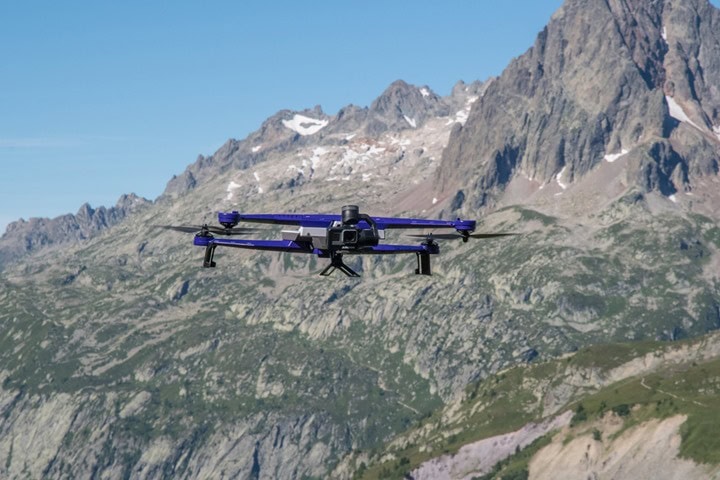
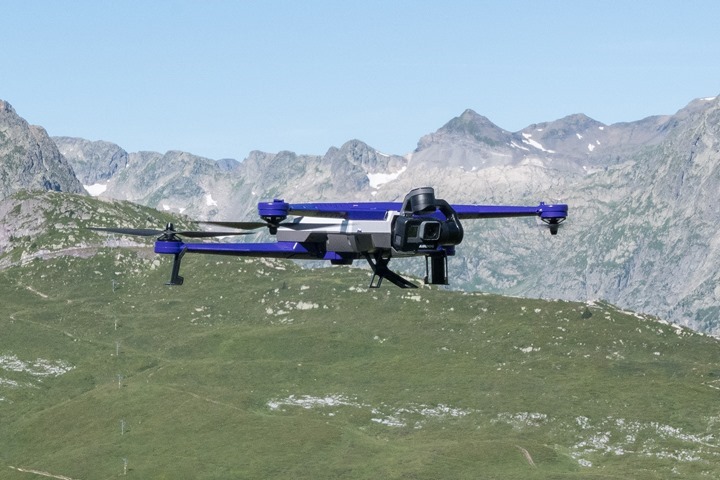
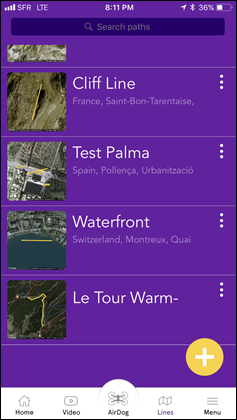
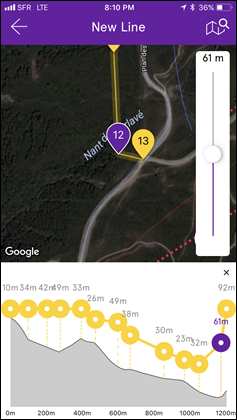
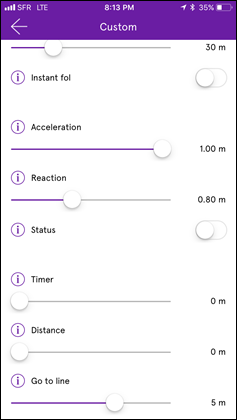
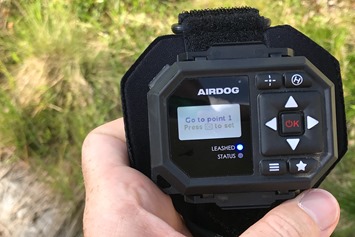
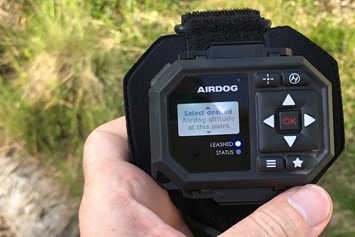
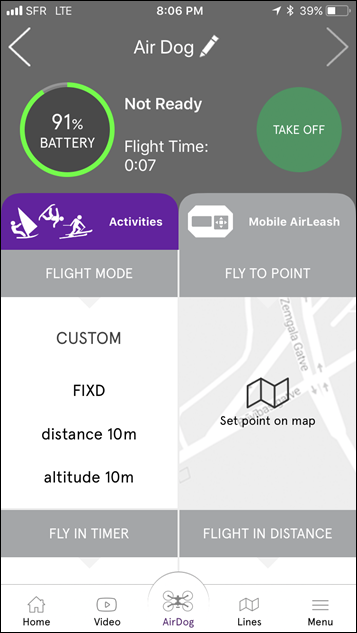
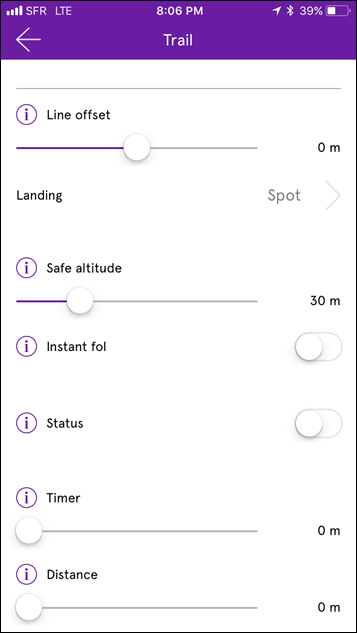
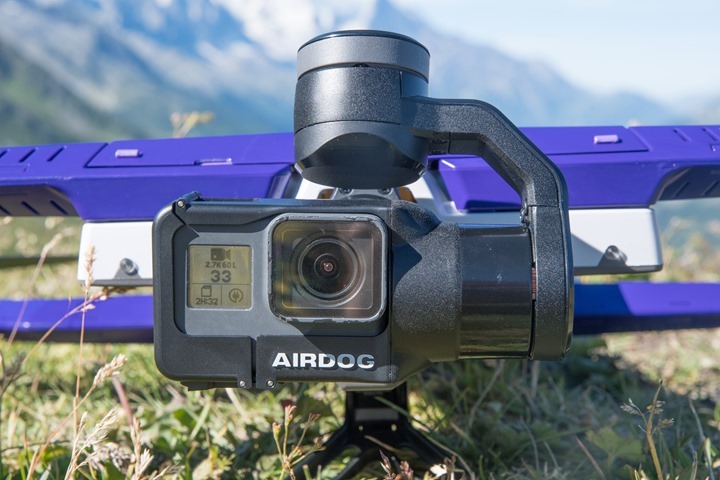
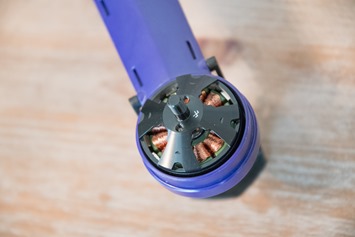
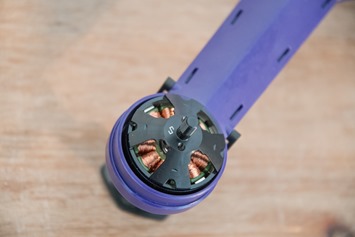
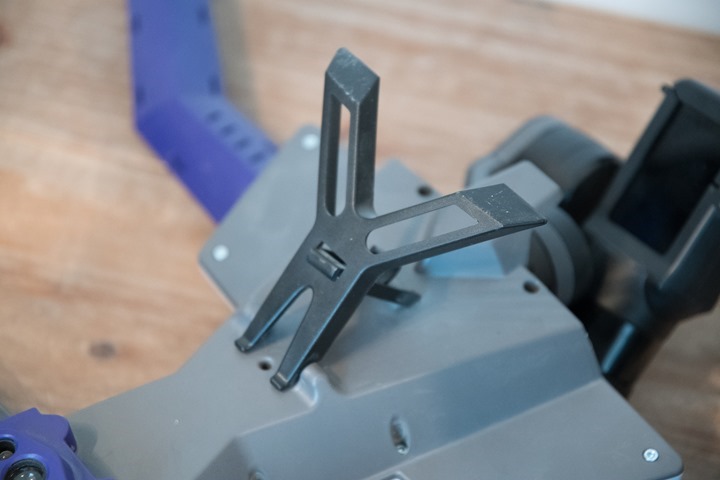
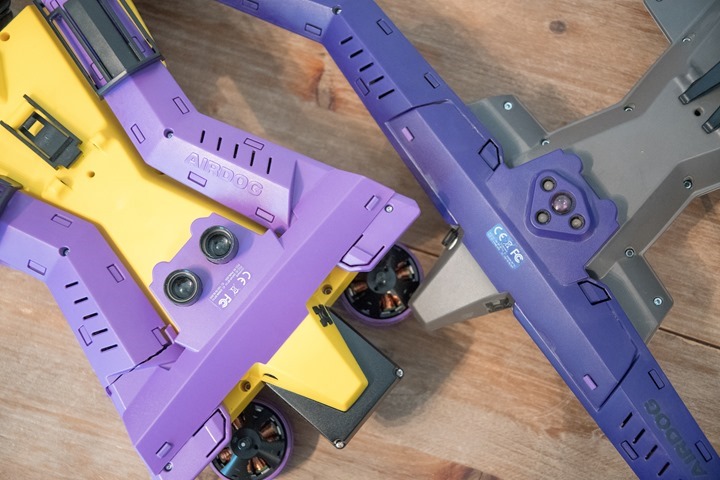
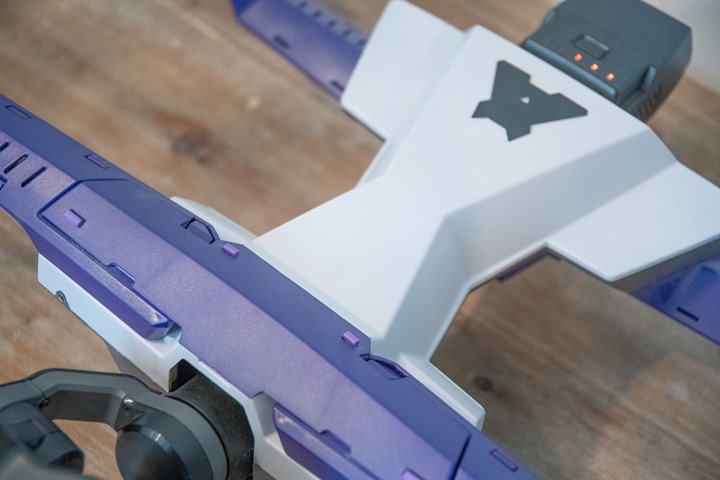
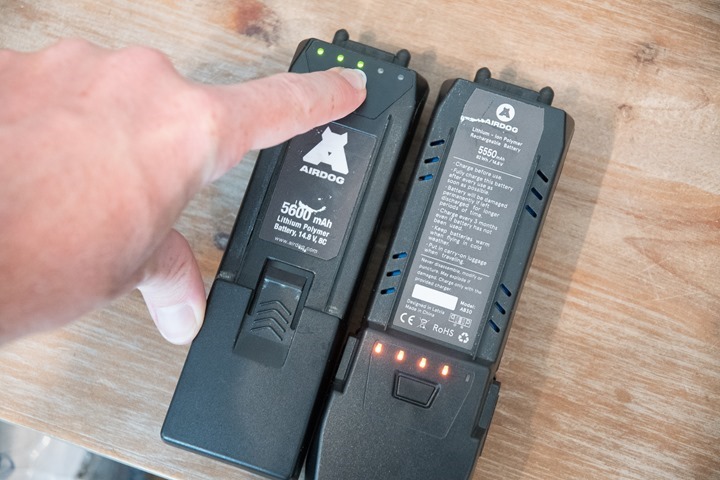
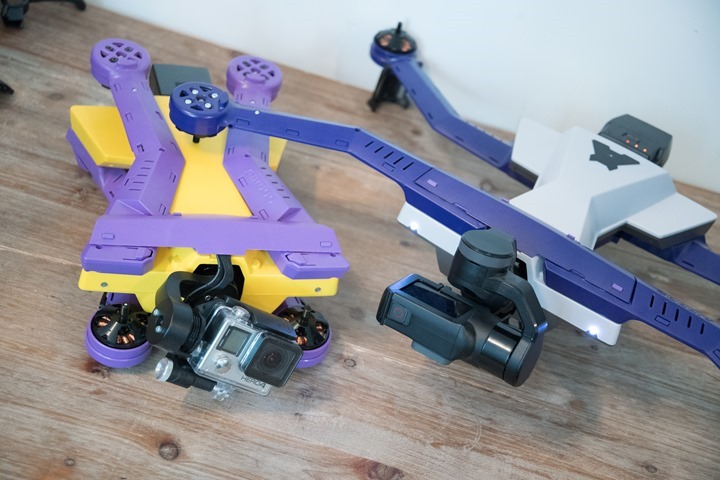

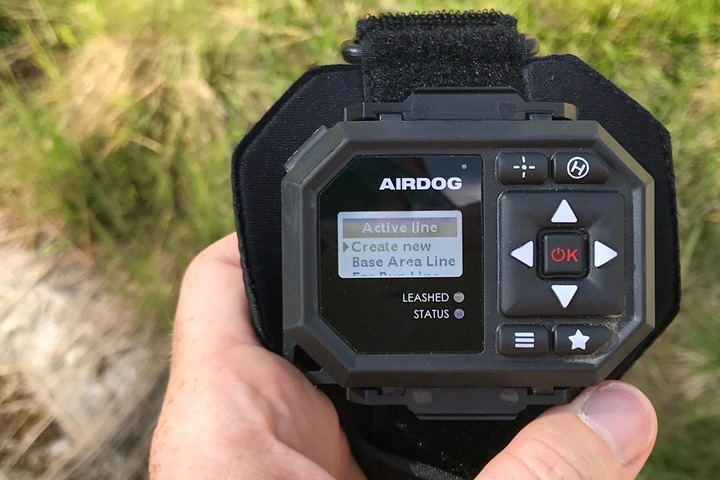
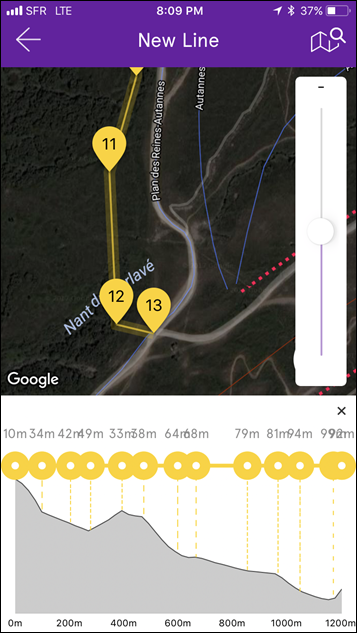
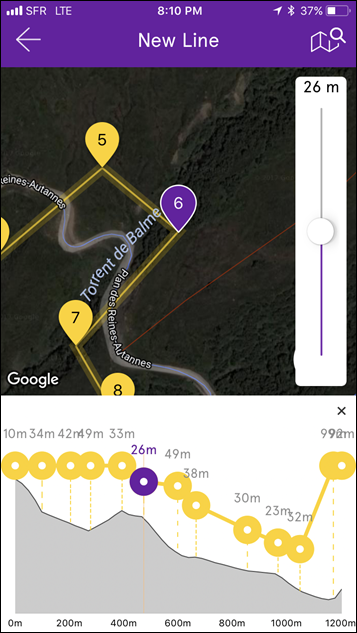
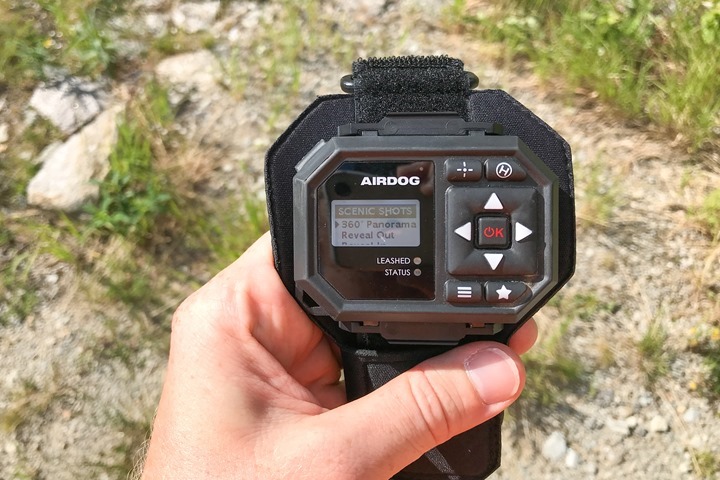
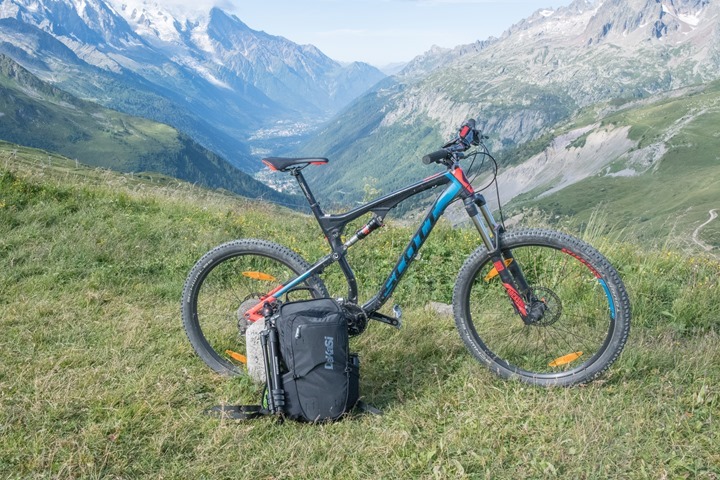
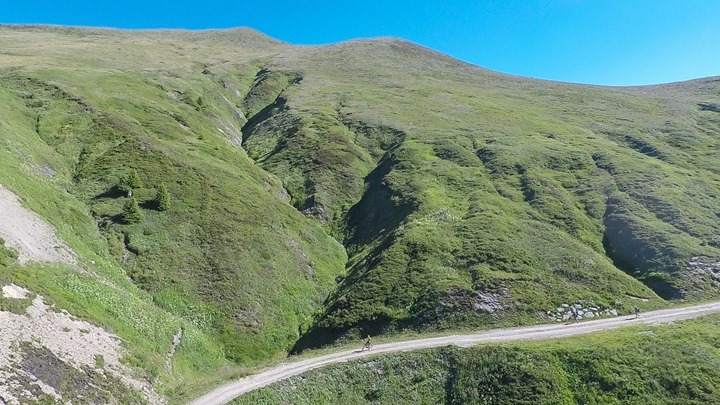
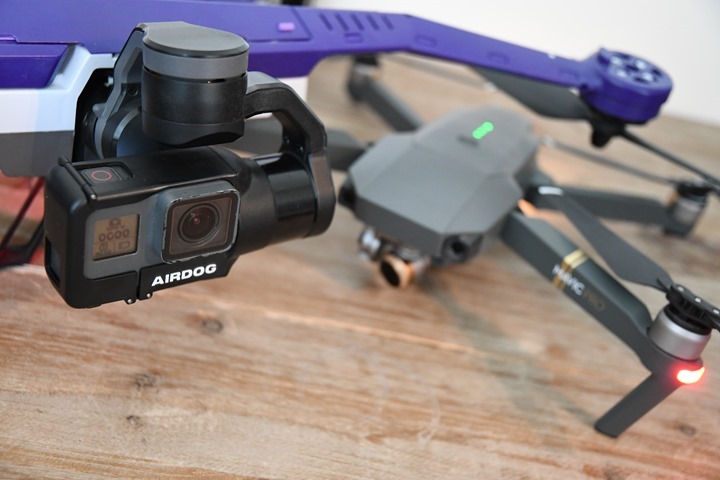
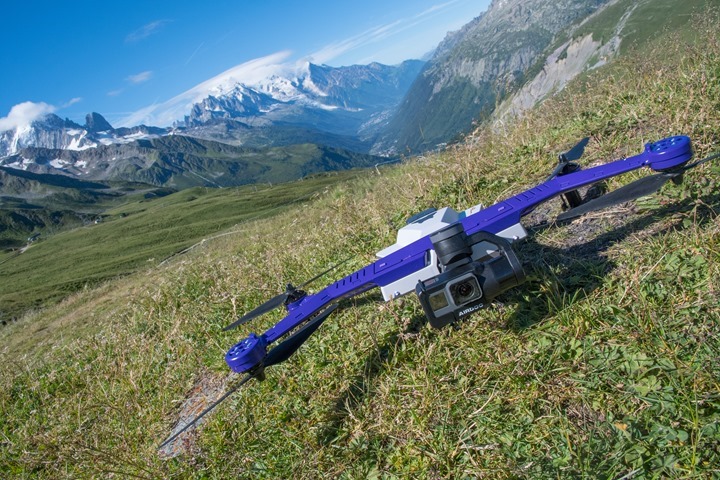


















mm, first comment? Is everyone on vacation?
Anyway, great preview, and great footage, Ray! Considering the price, it will be a while before I can afford one, but I really love that there is a good sports tracking drone out there, where development time and money goes into features, not basics like ‘what should I track’. I mean, yeah, it’s cool once that is possible, x years from now, but in a consumer product, why not choose for the simplest solution, the air leash?
The main selling point to me is just that – decent tracking. And, of course, the new 3D Route feature seems amazing to do that properly. So basically, if I get this correctly, you just run the course once, pressing the air leash buttons at the points you want to mark? Am I correct in assuming that you then set distance, altitude and camera angle for each marker, and the drone executes these commands when you get to that point? That would mean I have some questions: you would then have markers *on* the track you are running, while you need footage from a certain distance away. Since you did not precisely mark the actual path it will fly, how do you manage to get the drone to fly between two trees and not crash into it? How, when you are on a mountain path and you want the angle that looks at the valley, while the other side of the track has a fairly steep incline, do you figure out how high the drone has to be to avoid crashing it into the mountain? Are these all estimates?
Sorry if these questions are too detailed, I don’t have a drone yet, and wonder about the ease of use for beginners.
I would love if you also comment or review STAAKER. it seems cheaper and better thand Airdog and includes the camera but again does not have obstacle avoidance.
>>After a lot of testing we have found that many outdoor activities do not need obstacle avoidance. The ones that do requires more than current obstacle avoidance technology provides. Crashing can be easily avoided. But there are no guarantees that your Staaker will not hit anything while it is following you.
If your Staaker is about to hit something you can press the direction buttons to move over or around an obstacle. Or just press the pause button on the tracker and the Staaker will immediately stop moving, but continue to film you.
This is terrible idea and same problem with Airdog. I crashed DJIphantom4 even to the trees but here you can just crash into rocks or trees easily, especially without direct control.
People be slow in posting comments on a Friday apparently!
RE: Running course once and pressing Airleash buttons to get track: Yup, you can do exactly that. As you go along each point you can set the altitude, and then via the app the camera angle.
RE: Setting points you aren’t at: You can set points via the app to places you aren’t. It’s not an exact science though, since it’s via a satellite map. At present the app doesn’t allow you to change the location of a Airleash created point, just the altitude/angle.
RE: Elevations: The elevation is based off of the offset to you. So it’s a bit of an estimation of where I want to be and how high above me I want the drone to be. You don’t have to know the exact elevations around you.
At present it’s pretty good, but I think with some minor tweaks to the app it could be excellent. I’d also say it does require some out of the box thinking on how to get the really cool/unique shots. I think some of that just comes from watching lots of drone footage. I didn’t have time to get as creative as I did with the Airdog V1 unit in terms of unique shots, maybe later this summer when I’m back down in the Alps.
RE: Staaker – check out my earlier post this winter on it: link to dcrainmaker.com
STAAKER isn’t cheaper and neither it does include camera. Currently STAAKER costs $1595 (IIRC previously it could be pre-ordered by $1395) while current price on Airdog II is $1099 on KickStarter ($500 less). Yeah, retail price of Airdog will be $1500 — almost the same as STAAKER’s — and I think it is too expensive.
$1099 sounds sweet, retail price of $1200 would be fine too imo, but it shouldn’t go above that simply due to the fact that version 1 costed $1599 two years ago and all drones became significantly cheaper during last years, and that should be the case of ADII as well. But it is only my opinion – it is hard to tell because there are no other drones like these too.
I would like to see STAAKER vs ADII review when both will get shipped to customers. AFAIK both drones are in pre-order phase atm.
>>After a lot of testing we have found that many outdoor activities do not need obstacle avoidance. The ones that do requires more than current obstacle avoidance technology provides. Crashing can be easily avoided. But there are no guarantees that your Staaker will not hit anything while it is following you.
If your Staaker is about to hit something you can press the direction buttons to move over or around an obstacle. Or just press the pause button on the tracker and the Staaker will immediately stop moving, but continue to film you.
That’s a bull crap. I think the real reason behind Staaker and Airdog not having obstacle avoidance is due to extra costs. You see, other drones like Mavic or Spark do auto-following only at forward direction (i.e. they can chase target only from behind) while Staaker or Airdog can follow target from any direction, Therefore it is enough for Mavic to have only frontal obstacle detection while Staaker/Airdog would require 360° aerial detection. AFAIK the only drone that has 360° obstacle avoidance is DJI Inspire 2 and you can check how much it costs…
I think that Airdog’s 3D Route is a fair trade-off for not having an obstacle avoidance. Of course, I’d wish there was such, but only if price would be the same. Choosing between paying extra (and probably – a lot of extra) for obstacle avoidance or spending some time on setting 3D Route I will definitely prefer latter. Besides, auto avoiding obstacles doesn’t mean taking the best picture of me in action – most likely users would be supposed to set 3D Route anyway – for best shooting angles.
Ray, I have a few questions about the 3D Route:
1. Does Airdog has some kind of 3D Route Preview, so I could ensure that drone flies good and doesn’t hit anything on the path in case I misplaced some points? I’d like to double-check before taking a real ride.
2. Does STAAKER have 3D Route or something similar to that?
RE: Staaker vs ADII Review: I’d be game for that, once released.
RE: Language around obstacle avoidance: Totally agree. If there’s any market that needs it most, it’s this one.
RE: ADII 3D Route Preview: No, but that’s a brilliant idea and kinda merges with what I talked about earlier of just allowing me to fly the route in general to film. Ideal for b-roll shots, but your idea builds upon that so it’s two for one (from a dev standpoint). I’ll bring it up.
RE: Staaker 3D Route Functionality: I’m not aware of anything in their cards for that.
Hi Ray, very informative, quick question for ya … what occurs if the ADII hits an obstacle while you’re riding, but you don’t see the crash. You could be Km’s down the road by the time you realize it’s no longer in the air. How do you find it? or is it too-bad-so-sad type of deal?
Thanks
Pat
So here’s the good news: The Airdog is loud – you’ll know when you don’t hear it. ;)
In all seriousness, it’s how I mentally track that it’s still there. The only times it’s slightly more difficult is fast descents on a bike, or the same for skiing – but in most cases I can still hear it behind me.
The other thing you could technically look at is the Airleash, since it shows connectivity status. I don’t remember offhand if V2 will beep when it loses connectivity to the unit.
All that said, in most cases if I can’t hear it super close and know where it is mentally/visually, then I’m doing a quick double-check visually every 10-15 seconds.
Just to say, if you go back to Le Tour, just ride the trail above yours, starting from the Col de Balme, and go until Catogne: it’s the most beautiful trail of this area! ;-)
Yeah, amazing up there. We skied up there this winter, and also did a little bit of hiking the next day.
I was somewhat in a two-part pickle in that even though I started off the morning before the chairlifts did, by time I got up there, it was getting busy quick, and I hate flying around people – even far away (for all sorts of reasons). So I got shrunk into a bit of a box where I could fly. Probably didn’t help being the holiday weekend too.
The second problem simply being it’s been 10 months since I was last on a mountain bike. :( Need a few runs to get confidence up again. Looking forward to heading back later in August.
So Airdog takes 3 years to release AD I and plans to release AD II 10 months later?
“In talking with Airdog, they said about the only thing that’s the same is the plastic shell. Beyond that it’s got an all new magnetometer/compass, all new GPS, all new barometric altimeter, as well as new processing chipsets.”
Sounds to me like they just threw out a mediocre product (AD I) so that they could really focus their efforts on AD II. Why not just make the AD I a better product in the first place?
Do yourself a favor, get a DJI, head out to the mountains with you friends, and enjoy a quality product that has been proven to work.
Well, technology has improved in three years. Components that are available now simply weren’t available then, or weren’t available at prices that made Airdog work financially. Pretty expected for any tech company really. We see that same innovation in other products, including by DJI themselves.
I do agree that some of the software focused features like 3D lines likely could be ported to AD1, though Airdog says that the increased accuracy of the newer GPS chipsets is what’s enabling that to work well in tight quarters.
As for getting a DJI, as noted in the post – there are specific scenarios (most of them actually) where Airdog is a better choice for sports, which is kinda what their whole thing is about. If you don’t do sports, then totally agree with you that a DJI unit is better.
I’m a gadget freak, but I fail to see the real value for athletes in devices like this. It’s a hassle to take it with you, it’s a distriction during the activity, only works for 15 mins and could potentially be dangerous to others.
I do enjoy gadgets, but I’d never see myself using a thing like this during cycling or running. Also, it’s very ‘me-focused’, good for self-exposure.
I do think it could be handy for outdoor v/bloggers, but for sports, nah. But maybe it’s just me…
It depends on the sport. For most road cyclists, it’s not as useful. Whereas for downhill mountain bikers – definitely. Same goes for downhill skiers. Both of which have run times that are usually at/under 15 minutes.
Running varies, depending on where you’re running. Ultimately, saying something is ‘me focused’ isn’t any different than a GoPro in most sport action cases. That’s about capturing you or your friends doing sports.
It may be “me-focused”, but the only way there will ever be action shots of me, or my friends, is if I take them ;). And, of course, there needs to be.
Both airdog 1 and 2 perform well in strong wind. I wonder how Staaker will perform in strong wind?
Can you make a guess dc rainmaker??
Staaker flies faster than airdog, so does this mean it can probably handle a lot of wind? Or does this also depands on the software installed? So is the motor of Staaker maybe strong enough for higher winds, but will it loose gps signal due to it’s lag of correct installed software?
Would really want to see the comparison between airdog 2 and Staaker in strong winds..
Wind performance is essentially a three part question:
A) How is the positioning system (GPS or optical) of the unit, can it maintain position precisely because it does or doesn’t have the information required to do so? (This is an issue for example on the Karma drone, which drifts horribly)
B) From an algorithm standpoint, how does that information feed into motors and control (generally this isn’t an issue)
C) How does the gimbal work to counterbalance A & B (this isn’t an issue on the DJI products or ADII, but was more of an issue on AD1).
With that said, my time was limited on Staaker, but I didn’t see anything in item C that concerned me. And Item B it did return exactly back to where we took off from (very precisely), so that bodes positive.
Having higher aircraft speeds can be helpful, but as I recently showed in my DJI Spark review, even the smallest of drones wind speed is rarely an issue.
Ok, thank’s.
Learning more and more about the drone technology. Sounds like airdog II and Staaker might be sort of similar within high wind performance.
Maybe I am mistaken, here… but regarding obstacle avoidance – I think Airdog could be in serious trouble in the future.
You see, while in my previous post I said it made sense to go for a simple signal locator solution to do the target tracking, with the airleash, instead of the very complicated and so far not so succesful attempts using ‘visual person recognition’… I am having second thoughts.
Yes, ‘visual person recognition’ is much more difficult than tracking a signal from a transmitter – it requires major investment in software development. But it is also basically one form of ‘object recognition’,and allows for collision detection using the same bits of software.
So while DJI invests in crucial software for target tracking AND collision detection, Airdog is slowly falling behind by not developing any software for collision detection, simply because their superior target tracking gives them a false sense of safety from their competitors. Even though their drone is louder and is less suited to more general tasks, as Ray says.
However, DJI will either succeed in improving their visual target tracking and blow Airdog out of the water on all fronts, OR they can switch faily easily, I suspect, to the transmitter-option, even selling it as an add-on down the road, while still having decent collision detection and other marketable features. Airdog, on the other hand, will need a lot of time to catch up once the market dictates consumers only want more silent, smaller drones with collision detection. Complex software like that isn’t developed overnight. Airdog needs to up its game, or they’ll lose it.
So far for my crystal ball ;)
Nowadays visual object recognition from software perspective is not that hard. There are open-source libraries like OpenCV (Open Computer Vision) that provide a lot of complex and powerful algorithms to detect visual objects and their movements. The real problem for auto-pilot drones is not that much in obstacle detection itself but rather in operation after obstacles are detected. For RC-controlled drones it is easy – simply don’t fly into obstacles and wait until user moves drone into different direction. For auto-pilots it is much complex – drone needs somehow to continue its route but in the same time avoid an obstacle. DJI products totally fail here: for instance, Mavic dumbly stops before big-enough obstacle and waits for user to get back and “rescue” it via RC.
The problem with visual object tracking is simple: Trees.
And, I rest my case.
You go below trees, as is common in any sort of biking in the woods, or skiing, etc… and you lose the object. Even a country-road test I did with the spark lost it on the single tree that happened to overlap the road briefly.
DJI can put all the time and effort into this it wants, but none of it will fix not knowing where the person is when it loses it due to tree cover or similar. Inversely, Airdog can put all the time and effort into great transmitter tracking, but none of it fixes the gap of not having obstacle avoidance.
(Many drone/tech sites tend to test Active Tracking and related in giant flat and empty fields, of course it works great when there’s nothing else to worry about.)
Drone builder here wondering why they would ever face the motors down. Always causes issues. Crazy if you have to catch it or if it inadvertently hit the ground – which will happen. Break a prop and get dirt in the bushings. Looks cool but from a design standpoint that’s not a good way to go IMHO.
One has to step back a bit and remember it’s built on their V1 unit, which structurally is the same. When that came out, it was really the first mainstream drone to have a folding arm design. This was how they accomplished it given access to the components they had basically 3 years ago.
Since then obviously designs (and sizes) have changed otherwise.
Despite the number of wonky landings and crashes I’ve had over the years with the Airdog, dirt in the bushings was never a core issue. Quite honestly you’re a million times more likely to plow it into a tree than the ground.
I really think that that what the ADII represents is really a good example of what needs to be added to the DJI Mavic and Spark. Both a hardware followme device and a more robust route mode, with altitude and optional tracking (even if obstacle avoidance is only available in forward mode). This would really make the drone much more useful for an individual (vs. a crew) in many more situations then just action sports. That would seem to be the “sweet spot” that created GoPro in the photography realm. (Believe me, not everybody that buys a GoPro is an action sports devotee).
Given how quickly DJI is iterating, I would not be surprised to see this soon (maybe they should buy Airdog).
Those features can’t be simply added to the DJI Mavic and Spark due to requirement of 360° obstacle detection which in turn leads to significant price increase (somewhat towards DJI Inspire). Of course DJI with their resources and knowledge in drone industry could find out the solution but, as already stated, 90% of the market doesn’t need that, and the rest 10% can be left for Airdog and Staaker.
Or DJI could simply buy the Airdog (company) and control 99% of the market.
You guys keep comparing Staaker (not even released) and Airdog 2 (which cant’ even get 150 orders in with discount right now on kickstarter) to a GIANT like DJI that has 99.9% of the market like they are some sort of competitors.
Staaker and Airdog are super super nichy products for sports v-loggers . Else there is no use to buy expensive self following drone that has NO camera even!
For me Airdog flight time 15 mins is a joke. For surfing activity 15 mins will just get me into lineup and then it’s out of battery. The flight time must be 20-25+ mins like other drones promise.
At the same time DJI drones always require a pilot as their visual recognition is useless for the sports activities.
The struggle here is that it’s very hard for human pilot to keep tracking fast moving object (bycle etc) and at the same time he has to move somehow himself, else in 2 mins the bike will be out of reach.
What prevents DJI from releasing a smart watch control and beating Airdog? Nothing! But there is no demand for it, as we can see from poor backing on Airdog campaign (To compare 3 years ago Airdog colleted 1.3 million and now struggling to reach 250k) because nothing really changed the the market moved on, the overprice drone with no camera and no visual recognition is not worth the 1.5k + (rememmber you must still buy second battery, memory cards, Go-pro camera etc etc).
P.S. Check Eagle Flypro drone or Hexo. Same as airdog but much cheaper and it has camera too! The problem with Flypro and other cheap copycats is that the footage is not buttery smooth like more expensive drone but question is, do v-loggers need the cinematic level quality or rather pick cheaper drone?
Well, I think we’re comparing features. As I’ve said countless times, for the majority of people, DJI products are the better bet. But at the end of the day, DJI simply cannot do what these other units do for certain scenarios. Even DJI themselves will agree with that.
I think the reason you see Airdog’s lower volume numbers is due to lack of obstacle avoidance, the higher price than people are used to spending, and the lack of things like a regular flying mode. As for something preventing DJI from releasing a tether/leash – nothing. I think that’s what most of us are saying. None of us disagree there.
As for Hexo – have you tried it? It gets battery life of about 10 minutes, is massive and has horrible range. I have one and it’s totally useless. It also has the same problems as DJI for signal dropouts because of the phone connection being poor.
Finally, I think you’re minimizing the market segment saying it’s just vloggers. There’s definitely demand for such a product, it’s just that none of the solutions today fit the bill and all have serious draw-backs. If DJI sold a leash of sorts (whatever they want to call it), I suspect it’d so well in the same category of people that buy action cams for sports. I suspect it’d do better than their goggles do, fwiw, as it’s got broader appeal. Similarly, if GoPro sold such an accessory for their drone, that also might actually make that unit more appealing, since it could still be used for generic/scenic flying.
Thank you DC Rainmaker
I have not tried Hexo for reasons you specified but tried Fly pro and the problem is that footage is not as smooth as expensive drones. Now i am waiting for Staaker.
Airdog seems similar to Staaker but way too big in size in my opinion and flight time is way too short.
Do you plan to do Staaker vs Airdog one on one battle in features and footage?
I probably will do something.
A lot of times my coverage of drones depends a little bit on just lucky timing with travel and such. I try and make my drone reviews/tests more interesting/challenging than an empty field, so that usually means going somewhere.
Unfortunately I can’t fly any drone where I live in Paris, so I have to head out of town a ways. I have a few spots I use within an hours drive, but none have much in the way of terrain.
hi again DC Rainmaker
I finally made the flypro review that I’ve been talking about, i hope you find it helpful link to youtu.be
This is a fun raw cut of how we got the drone and tested it in real life, comparing it to DJI drones! I show you the raw footage, the pros and cons of the drone as well.
XEagle is a cheaper alternative to the popular Airdog (ADII sports-tracking drone) and Staaker self following drones. The quality is rather poor but it gets the job done and it also includes the camera AND gimbal and costs 3 times less than Staaker and Aidog. On the other hand DJI drones don’t have the wrist watch control and require the presence of the pilot to control the drone and follow you while their visual auto-follow mode is pretty useless for action sports like surfing.
I would say quality is pretty low and you will not get those butter smooth recordings like Airdog and Staaker promise but it’s a question of how much the user wants to spend. Here he gets both drone and camera for 699, while airdog and others are around $1500 + Gopro ($450 more?). So it’s always “you get what you pay” problem.
Next I am looking forward to test Staaker drone. I dont worry too much about lack of obstacle avoidance, as it is usually not an issue when i film surfing, but I am happy about their 30 minutes promised Fly time. While Aidog’s 15 mins is just way too poor for me for the same price and same list of features.
Hexo – i also considered but decided to skip it for the reasons you specified earlier.
P.S. I am not affiliated with any jet surfing or drone companies, and always do my honest and unbiased reviews.
P.S.S. I am getting the broken wrist watch control replaced soon by the warranty.
Great review Rainmaker. I own a Mavic Pro and just like you mentioned, neither Active Track or Follow Me work for close in tracking of my favorite sport, kiteboarding. Won’t be spending $2,300 (with Hero 5 and spare battery) on an AD II or Staaker. I understand the pricing dilemma but I will have to wait for prices to drop, AND for these startups to stabilize, or for DJI to compete in this niche. Oh, and anyone harping about obstacle avoidance needs to spend time with a Mavic/Phantom. It has lots of flaws. I love the concept of a route planner with the ADII, and as other commentors have said, I would choose that over obstacle avoidance sensors any day.
I agree with you completely that there is a real market for autonomous GPS electronic leash based drones. Heck, we were using GoPro’s in kiteboarding before anyone even knew what a GoPro was. There is just too much of a gap between Staaker/ADII and DJI right now. I have no interest in DJI goggles, or a Crystal Sky monitor, but I would jump on an electronic leash option for my Mavic in a heart beat. Dare to dream…..
The company is not able to be in this business, I received an Airdog with the battery burned, and they said that there are no batteries for sale, so I can wait. I waited two months I contacted to buy again, and they informed me they still do not have the batteries for sale maybe in February and are not sure. But I saw on the website of the airdog that has the drone to sell with battery, but only the battery does not sell. They are misleading not recommend this company, they are not serious
Did you contact technical support though? Surely support would be rather concerned about seeing a ‘burned’ battery (which is a huge deal in this industry). And if you bought it from them or an authorized dealer, then they’d happily swap it out.
Or was this bought from a 3rd party (i.e. Craigslist/eBay) and the battery was burned?
(Btw: My guess as to why they may not have spare parts is they are likely waiting for the ADII batteries to come in in larger quantities, since they’ve just started shipping those.)
Just refund it and get staaker, i love it! I made tons of great self following jet surfing videos with it! The tracking is butter smooth! 2 batteries are included
The product is new, but I bought it at the Brazil Customs auction, but selling to replace a defective parts is just as important as selling a new product. Airdog to sell new drones has batteries in stock, but meeting customers with defective parts does not have batteries. Is that unethical and disrespectful to customers, waiting more than five months to have a defective part replaced? It’s an absurd. So I do not recommend trading with a company that does not respect the consumer.
Have you tried contacting Airdog technical support?
That is why I am making this complaint, Yes I contacted the support of Airdog Mr. Eldars, the first time on October 17, the second time on October 18, the third time on November 1 was when the Mr Eldars spoke to wait until the second fortnight of December that would have the batteries for sale, the fourth time I contacted to buy the batteries, it was now in December, Mr Eldars said that availability for sale of batteries maybe in February, but it does not guarantee that it will have the batteries. But batteries for sale of new Drones they have but for replacement of batteries does not sell. Is this conduct of a serious company? It may even be a good drone, but I would not recommend this company if your Airdog drone breaks down, just buying another one.
A friend and I purchased this drone (ADII) back in November, and finally got it in January. The extra battery that they charged us for didn’t come until a month later, but that’s another story.
AirDog should never have launched this drone as it is rife with software glitches and malfunctions, and the internal components failed on our first flight, causing a total loss as well as the loss of my GoPro 6.
Both batteries were defective, only giving us 8 – 10 min of flight time each before the drone malfunctioned and crashed.
When I contacted AirDog back in early February about the crash and the issues that caused it, they had me upload our logs to verify that yes, it was an AirDog 2 malfunction, and not user error.
I can happily share those emails to back up everything that I am saying here.
After confirming that AirDog was the issue, the company went completely dark and silent on us for a month.
I repeatedly reached out to them over and over again, and after threatening legal action, I finally got a single response telling me that due to the high influx of technical support requests, they haven’t gotten to our case yet but would try and look into it…
Now over 2 months later, the company has completely stopped responding, and we are left with a drone that we flew for 16 min and spent over $2000 on that is now useless, a destroyed $400 GoPro, and absolutely no idea on how to effectively get our money back from a company based in Latvia.
It’s simply the worst experience with drones and a drone company I have ever dealt with, and people need to know what this company is doing to people.
They are collecting revenues, financing their research and development on the backs of customers, and then ignoring the same customers who are keeping them in business.
As a business analyst myself with a background in business development and marketing, I would say that this company is a house of cards that’s ready to fall like Kevin Spacey.
I am hoping that you will at least choose to share this awful experience with others such that they can protect themselves from a company such as this.
Thank you-
Jordan Tobins
Fred Tahar